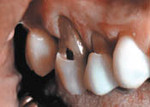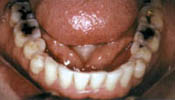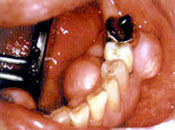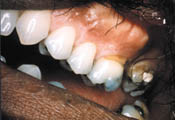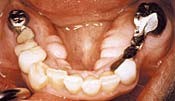Self Diagnosis
Since thirty percent of the people who clench and grind their teeth are not aware they're doing it, it's important that the signs of this disorder be recognized during routine visits to the dentist, or through self-examination.
What should you look for? Click on the photos to enlarge.
1. Overall Appearance
Enlarged muscles on the sides of the face
2. Soft Tissue Changes
Receding tissue around the necks of the teeth
3. Dentition
4. Bone
5. Occlusal Dimples


